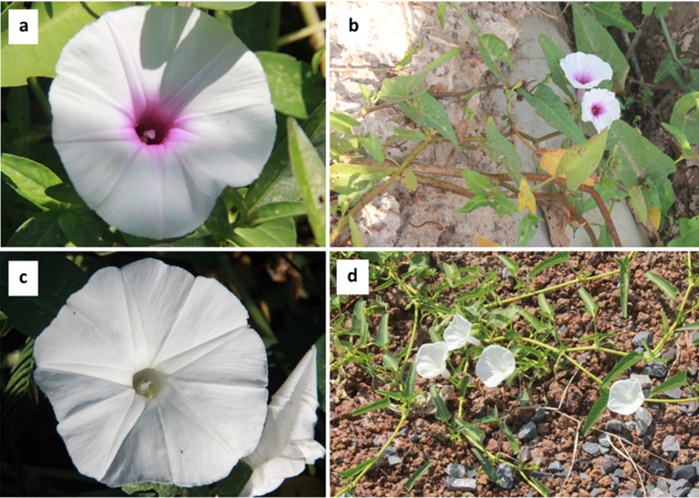Different floral forms are often hypothesized to stem from selection by different pollinators. Thus, the presence of multiple floral colors within a species might indicate visitation by different pollinator species. To test this prediction, we examined Ipomoea aquatica Forssk., a morning glory species with a “white” morph (all-white flowers) and a “purple” morph (white corolla lobes with purple corolla tubes). We compared the pollinator community and reproductive success of each color morph. We found that the main pollinators (bees and butterflies) visited both morphs, and that overall insect community composition to the two floral colors did not differ significantly. Moreover, we found that I. aquatica benefits from insect pollinators, as unpollinated flowers set fewer seeds than pollinated flowers. The similar pollinator communities and reproductive success of the two morphs suggest that floral visitors interact with the two morphs similarly. This research addresses SDG 15 to “protect, restore and promote sustainable use of terrestrial ecosystems… and halt biodiversity loss.”

Hassa P, Traiperm P, Stewart AB. 2020. Pollinator visitation and female reproductive success in two floral color morphs of Ipomoea aquatica (Convolvulaceae). Plant Systematics and Evolution, 306:88.
